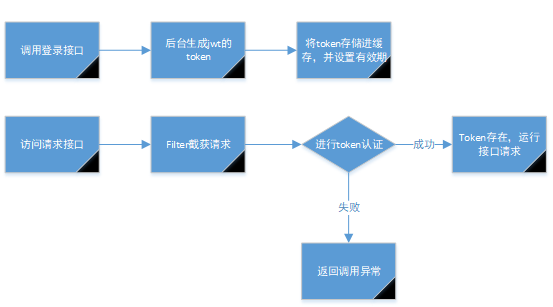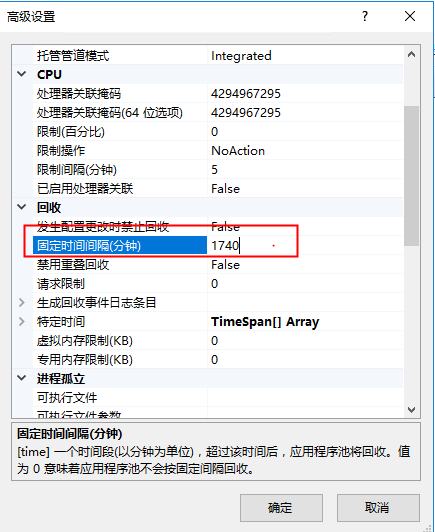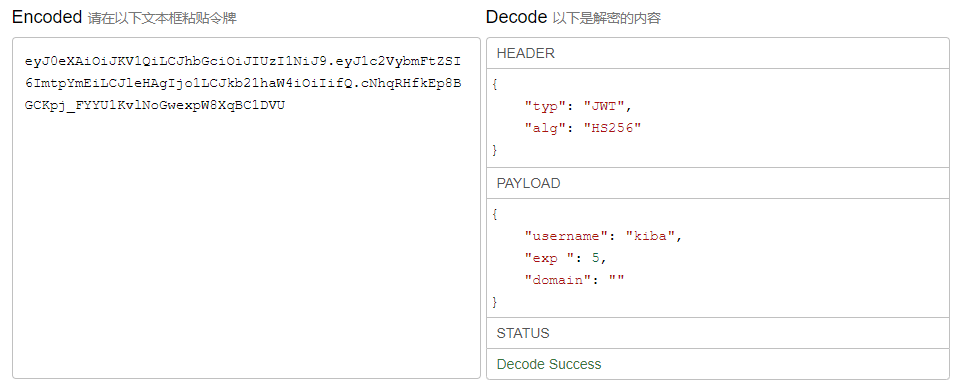
前言
本文主要介绍JWT的实战运用。
准备工作
首先我们创建一个Asp.Net的,包含MVC和WebApi的Web项目。
然后使用Nuget搜索JWT,安装JWT类库,如下图。

设计思路
这里我们简单的做了一个token验证的设计,设计思路如下图所示:

代码实现
缓存
首先,我们先开发工具类,根据设计思路图可得知,我们需要一个缓存类,用于在服务器端存储token。
编写缓存相关类代码如下:
public class CacheHelper
{
public static object GetCache(string key)
{
return HttpRuntime.Cache[key];
}
public static T GetCache<T>(string key) where T : class
{
return (T)HttpRuntime.Cache[key];
}
public static bool ContainsKey(string key)
{
return GetCache(key) != null;
}
public static void RemoveCache(string key)
{
HttpRuntime.Cache.Remove(key);
}
public static void SetKeyExpire(string key, TimeSpan expire)
{
object value = GetCache(key);
SetCache(key, value, expire);
}
public static void SetCache(string key, object value)
{
_SetCache(key, value, null, null);
}
public static void SetCache(string key, object value, TimeSpan timeout)
{
_SetCache(key, value, timeout, ExpireType.Absolute);
}
public static void SetCache(string key, object value, TimeSpan timeout, ExpireType expireType)
{
_SetCache(key, value, timeout, expireType);
}
private static void _SetCache(string key, object value, TimeSpan? timeout, ExpireType? expireType)
{
if (timeout == null)
HttpRuntime.Cache[key] = value;
else
{
if (expireType == ExpireType.Absolute)
{
DateTime endTime = DateTime.Now.AddTicks(timeout.Value.Ticks);
HttpRuntime.Cache.Insert(key, value, null, endTime, Cache.NoSlidingExpiration);
}
else
{
HttpRuntime.Cach
56c
e.Insert(key, value, null, Cache.NoAbsoluteExpiration, timeout.Value);
}
}
}
}
/// <summary>
/// 过期类型
/// </summary>
public enum ExpireType
{
/// <summary>
/// 绝对过期
/// 注:即自创建一段时间后就过期
/// </summary>
Absolute,
/// <summary>
/// 相对过期
/// 注:即该键未被访问后一段时间后过期,若此键一直被访问则过期时间自动延长
/// </summary>
Relative,
}
如上述代码所示,我们编写了缓存帮助类—CacheHelper类。
CacheHelper类:使用HttpRuntime的缓存,类里实现缓存的增删改,因为使用的是HttpRuntime,所以,如果没有设置缓存的超时时间,则缓存的超时时间等于HttpRuntime.Cache配置的默认超时时间。
如果网站挂载在IIS里,那么,HttpRuntime.Cache配置超时时间的地方在该网站的应用程序池中,如下图:

56c Jwt的帮助类
现在我们编写Jwt的帮助类,代码如下:
public class JwtHelper
{
//私钥
public const string secret = "MIGfMA0GCSqGSIb3DQEBAQUAA4GNAmD7RTE2drj6hf3oZjJpMPZUQ1Qjb5H3K3PNwIDAQAB";
/// <summary>
/// <summary>
/// 生成JwtToken
/// </summary>
/// <param name="payload">不敏感的用户数据</param>
/// <returns></returns>
public static string SetJwtEncode(string username,int expiresMinutes)
{
//格式如下
var payload = new Dictionary<string, object>
{
{ "username",username },
{ "exp ", expiresMinutes },
{ "domain", "" }
};
IJwtAlgorithm algorithm = new HMACSHA256Algorithm();
IJsonSerializer serializer = new JsonNetSerializer();
IBase64UrlEncoder urlEncoder = new JwtBase64UrlEncoder();
IJwtEncoder encoder = new JwtEncoder(algorithm, serializer, urlEncoder);
var token = encoder.Encode(payload, secret);
return token;
}
/// <summary>
/// 根据jwtToken 获取实体
/// </summary>
/// <param name="token">jwtToken<
56c
/param>
/// <returns></returns>
public static IDictionary<string,object> GetJwtDecode(string token)
{
IJsonSerializer serializer = new JsonNetSerializer();
IDateTimeProvider provider = new UtcDateTimeProvider();
IJwtValidator validator = new JwtValidator(serializer, provider);
IBase64UrlEncoder urlEncoder = new JwtBase64UrlEncoder();
IJwtAlgorithm algorithm = new HMACSHA256Algorithm();
IJwtDecoder decoder = new JwtDecoder(serializer, validator, urlEncoder, algorithm);
var dicInfo = decoder.DecodeToObject(token, secret, verify: true);//token为之前生成的字符串
return dicInfo;
}
}
代码很简单,实现了JWT的Code的创建和解析。
注:JWT的Code虽然是密文,但它是可以被解析的,所以我们不要在Code里存储重要信息,比如密码。
JWT的Code与解析后的内容如下图所示,左边未Code,右边未解析的内容。

AuthenticationHelper验证帮助类
现在,我们已经可以编写验证类了,利用刚刚已创建的缓存帮助类和JWT帮助类。
AuthenticationHelper验证帮助类代码如下:
public class AuthenticationHelper
{
/// <summary>
/// 默认30分钟
/// </summary>
/// <param name="username"></param>
public static void AddUserAuth(string username)
{
var token = JwtHelper.SetJwtEncode(username, 30);
CacheHelper.SetCache(username, token, new TimeSpan(TimeSpan.TicksPerHour / 2));
}
public static void AddUserAuth(string username, TimeSpan ts)
{
var token = JwtHelper.SetJwtEncode(username, ts.Minutes);
CacheHelper.SetCache(username, token, ts);
}
public static string GetToken(string username)
{
var cachetoken = CacheHelper.GetCache(username);
return cachetoken.ParseToString();
}
public static bool CheckAuth(string token)
{
var dicInfo = JwtHelper.GetJwtDecode(token);
var username = dicInfo["username"];
var cachetoken = CacheHelper.GetCache(username.ToString());
if (!cachetoken.IsNullOrEmpty() && cachetoken.ToString() == token)
{
return true;
}
else
{
return false;
}
}
}
如代码所示,我们实现了验证token创建、验证token获取、验证Token校验三个方法。
到此,我们的基础代码已经编写完了,下面进入验证的应用。
Fliter
首先,在Global.asax文件中,为我们WebApi添加一个过滤器,代码如下:
public class WebApiApplication : System.Web.HttpApplication
{
protected void Application_Start()
{
AreaRegistration.RegisterAllAreas();
GlobalConfiguration.Configure(WebApiConfig.Register);
//webapiFilter
System.Web.Http.GlobalConfiguration.Configuration.Filters.Add(new HttpPermissionFilter());
System.Web.Http.GlobalConfiguration.Configuration.Filters.Add(new HttpExceptionFilter());
//mvcFliter
System.Web.Mvc.Globa
30cc
lFilters.Filters.Add(new MvcExceptionFilter());
System.Web.Mvc.GlobalFilters.Filters.Add(new MvcPermissionFilter());
RouteConfig.RegisterRoutes(RouteTable.Routes);
BundleConfig.RegisterBundles(BundleTable.Bundles);
}
}
代码中创建了四个过滤器,分别是MVC的请求和异常过滤器和WebApi的请求和异常过滤器。
这里我们主要看WebApi的请求过滤器——HttpPermissionFilter。代码如下:
public class HttpPermissionFilter : System.Web.Http.Filters.ActionFilterAttribute
{
public override void OnActionExecuting(HttpActionContext actionContext)
{
string url ="请求Url" + actionContext.Request.RequestUri.ToString();
var action = actionContext.ActionDescriptor.ActionName.ToLower();
var controller = actionContext.ControllerContext.ControllerDescriptor.ControllerName.ToLower();
if (controller != "login" && controller != "loginout")
{
//客户端段token获取
var token = actionContext.Request.Headers.Authorization != null ? actionContext.Request.Headers.Authorization.ToString() : "";
//服务端获取token 与客户端token进行比较
if (!token.IsNullOrEmpty() && AuthenticationHelper.CheckAuth(token))
{
//认证通过,可进行日志等处理
}
else
{
throw new Exception("Token无效");
}
}
}
}
我们的HttpPermissionFilter类继承了System.Web.Http.Filters.ActionFilterAttribute,这样他就可以截获所有的WebApi请求了。
然后我们重写了他的OnActionExecuting方法,在方法里,我们查询到当前请求的Controller的名称,然后对其进行了一个简单的判断,如果是login(登录)或loginout(登出),那我们就不对他的token进行验证。如果是其他请求,则会从请求的Headers的Authorization属性里读取token,并使用AuthenticationHelper类对这个token进行正确性的验证。
WebApi接口
现在我们编写WebApi接口,编写一个登录接口和一个普通请求接口。
登录接口:这里我们使用AuthenticationHelper类创建一个token,并把他存储到缓存中。
然后再把token返回给调用者。
普通接口:这里我们不做任何操作,就是简单的返回成功,因为是否可以访问这个接口,已经又Filter控制了。
代码如下:
public class LoginController : ApiController
{
public string Get(string username,string pwd)
{
AuthenticationHelper.AddUserAuth(username, new TimeSpan(TimeSpan.TicksPerMinute * 5));//5分钟
string token = AuthenticationHelper.GetToken(username);
return token;
}
}
public class RequestController : ApiController
{
public string Get()
{
return "请求成功";
}
}
测试页面
现在我们编写测试页面,这里我们实现三个按钮,登录、带token访问Api、无token访问Api。
代码如下:
<div>
<script>
$(document).ready(function () {
$("#request").click(function () {
var token = window.localStorage.getItem('token');
if (token) {
$.ajax({
type: "GET",
url: "http://localhost:50525/api/Request",
success: function (data) {
$('#con').append('<div> success:' + data + '</div>');
console.log(data);
},
beforeSend: function (xhr) {
//向Header头中添加Authirization
xhr.setRequestHeader("Authorization", token);
},
error: function (XMLHttpRequest, textStatus, errorThrown) {
$('#con').append('<div> error:' + errorThrown + '</div>');
}
});
}
else {
alert("token不存在");
}
});
$("#requestNotoken").click(function () {
var token = window.localStorage.getItem('token');
if (token) {
$.ajax({
type: "GET",
url: "http://localhost:50525/api/Request",
success: function (data) {
$('#con').append('<div> success:' + data + '</div>');
console.log(data);
},
error: function (XMLHttpRequest, textStatus, errorThrown) {
$('#con').append('<div> error:' + errorThrown + '</div>');
}
});
}
else {
alert("token不存在");
}
});
$("#login").click(function () {
$.ajax({
type: "GET",
url: "http://localhost:50525/api/Login/?username=kiba&pwd=518",
success: function (data) {
$('#con').append('<div> token:' + data + '</div>');
console.log(data);
window.localStorage.setItem('token', data)
}
});
});
});
</script>
<h1>测试JWT</h1>
<button id="login">登录</button>
<button id="request">带token访问Api</button>
<button id="requestNotoken">无token访问Api</button>
<div id="con"></div>
</div>
测试结果如下:

如上图所示,我们已经成功实现简单的token验证。
----------------------------------------------------------------------------------------------------
到此JWT的实战应用就已经介绍完了。
代码已经传到Github上了,欢迎大家下载。
Github地址: https://github.com/kiba518/JwtNet
----------------------------------------------------------------------------------------------------
注:此文章为原创,任何形式的转载都请联系作者获得授权并注明出处!
若您觉得这篇文章还不错,请点击下方的【推荐】,非常感谢!
https://www.cnblogs.com/kiba/p/14461836.html

